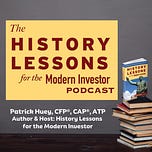On April 3, 1948, President Harry S. Truman signed the Economic Recovery Act, better known as the Marshall Plan, into law.
Following World War II, Europe’s economies were left in ruins—a devastated infrastructure, widespread poverty, and rampant inflation painted a bleak picture of the continent's future. The Marshall Plan marked the United States’ ambitious effort to rebuild war-torn Western Europe, stabilizing economies and curbing the spread of communism as Cold War tensions grew. The $13 billion assistance package (roughly $173 billion in today’s dollars) helped Western Europe recover, reigniting trade and eventually building the modern economies we recognize today. The plan rebuilt critical infrastructure—bridges, roads, factories—and provided economic and industrial aid to reconstruct Europe’s productivity systems. 🏗️ Beyond the physical revival, it also laid the foundation for modern economic cooperation. The Marshall Plan fostered long-lasting alliances by encouraging countries to pool resources and adopt policies promoting free enterprise and trade. It paved the way for institutions like NATO and the European Union. This ambitious policy saved Europe from collapse and safeguarded U.S. economic interests, as a recovering Europe became a vital trading partner and key contributor to the post-war global economy.
Here are three Lessons for the Modern Investor courtesy of the Marshall Plan.
🏗️ Long-Term Vision, Even Amid Crisis
The Marshall Plan exemplified how strategic investments during turbulent times can yield long-term dividends for both investors and broader systems. While the immediate post-war period was uncertain and risky, U.S. leaders focused on a future where political and economic stability in Europe would translate to stronger global markets and reinforced alliances. Retirees or long-term investors can take a similar approach: volatile market periods can feel chaotic, but maintaining focus on well-diversified portfolios and sticking to long-term strategies often works better than reacting emotionally to short-term noise. Behavioral finance teaches us that loss aversion—the tendency to fear losses more than valuing equivalent gains—often clouds judgment during crises. Focusing on growth over the long haul, like the architects of the Marshall Plan, remains key.
🏗️ Collaboration Yields Compound Benefits
A key feature of the Marshall Plan was its emphasis on collaboration rather than one-way assistance. European countries receiving aid agreed to work with each other economically, laying the groundwork for what eventually became the European Union. This reinforces the lesson that pooling resources and partnerships often creates stronger outcomes than going it alone. For investors, this applies in both macro and micro settings: on the macro level, multinational or cooperative initiatives like economic blocs can drive global growth; on the micro level, investors benefit by pooling risk through index funds and diversified accounts. Just as Europe thrived through collective action, portfolios diversified across regions, industries, and asset classes are more resilient against downturns.
🏗️ Prepare for Changing Paradigms
The success of the Marshall Plan reflected foresight into shifting global dynamics. U.S. leaders understood that Europe’s economic recovery would change from an agrarian, wartime economy to modern trade, technology, and infrastructure industries. Similarly, today’s investors must recognize when economic paradigms shift and prepare to position themselves accordingly. Think of the transitions we see today, from fossil fuels to renewables, traditional finance to fintech, manufacturing to AI and automation. Being mindful of these shifts—and strategically allocating investments to sectors poised for long-term growth—can help future-proof portfolios. Behavioral economists often refer to status quo bias, where individuals hesitate to adjust strategies despite evidence of changing environments. The Marshall Plan reminds us that progress comes from anticipating change and acting accordingly.
As one of the crowning achievements of 20th-century economic policy, the Marshall Plan demonstrates the power of long-term thinking. Whether navigating volatile periods in the stock market, geopolitical uncertainty, or economic transitions, the principles of diversification, forward vision, and adaptability are as relevant now as they were in the post-war 1940s.
History Lessons for the Modern Investor | Economic Trends & Market Insights Explore the past to make sense of the present! This playlist breaks down key historical events and their impact on today’s financial markets. From understanding inflation and interest rates to analyzing the 10-year Treasury yield, we connect the dots between history and modern investing. Learn how figures like Elon Musk influence the economy, what past trends say about today’s economic calendar, and even answer questions like "Where is my tax refund?" and how tax refunds affect consumer spending. Stay ahead of the curve by using history as your guide to smarter investing! 🚀📈
This episode is sponsored by Victory Independent Planning. Ready to take the stress out of your retirement? At Victory Independent Planning, we put you on the right trajectory with our exclusive VIP Retirement Glidepath™️! Schedule an assessment now: https://freebusy.io/victoryindependentplanning-VIP-Booking/phone-consultation 🎯Patrick Huey is a small business owner and the author of three books on history and finance as well as the highly-rated recently-released fictional work Hell: A Novel. As owner of Victory Independent Planning, LLC, Patrick works with families and non-profit organizations. He is a CERTIFIED FINANCIAL PLANNER™ professional, Chartered Advisor in Philanthropy® and an Accredited Tax Preparer. He earned a Bachelor’s degree in History from the University of Pittsburgh, and a Master of Business Administration from Arizona State University. Patrick previously served as a Naval Flight Officer from 1996-2005, earning the Strike Fighter Air Medal during combat operations and two Navy Achievement Medals. 👉🏻 Reach him at 877-234-8957 or schedule a time to talk using this link:
https://freebusy.io/victoryindependentplanning-VIP-Booking/phone-consultation
#nuclearpower #HistoryLessons #RiskManagement #LearnFromHistory
Follow along for more insights, strategies, and reflections.






